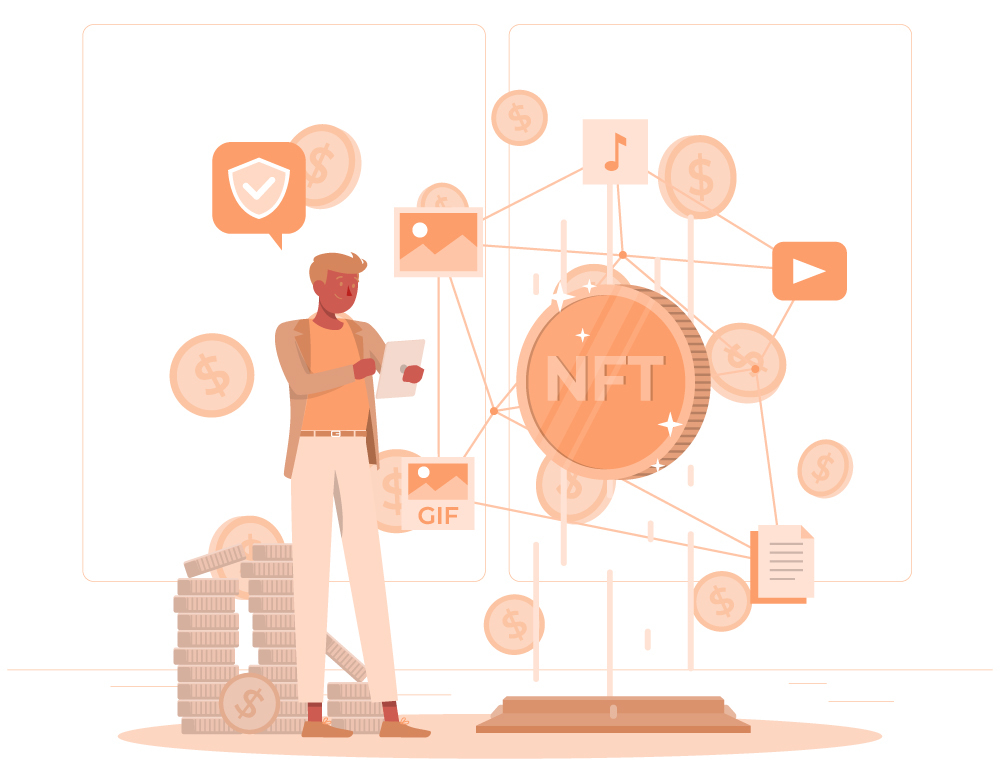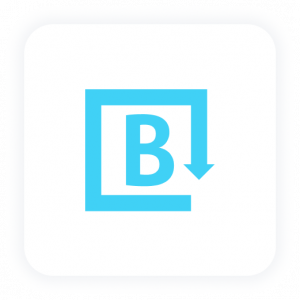Managing an ever-growing volume of digital assets in today’s digital landscape has become a challenge for businesses and creative professionals. Digital Asset Management (DAM) offers a solution to this problem.
Imagine being part of a creative team at a marketing agency, searching for specific assets for a project, only to waste valuable time sifting through folders and coming up empty-handed. Enter DAM – a game-changer in asset management. DAM is a software solution that revolutionizes organising, storing, and retrieving digital assets.
DAM goes beyond traditional file storage by providing features like metadata tagging, version control, advanced search capabilities, and customizable workflows. By implementing DAM, you can significantly improve workflow efficiency, streamline collaboration, maintain brand consistency, and save time and resources.
In this blog, we will delve into the benefits, challenges and the best digital asset management.
What is Digital Asset Management (DAM)?
Digital Asset Management (DAM) is the practice of organizing, storing, and distributing digital assets in a centralized system. It involves categorizing and tagging assets for easy retrieval, ensuring up-to-date and properly documented files.
DAM systems provide features like version control, metadata management, and rights management. They enable collaboration, integrate with other tools, and streamline workflows. DAM helps businesses enhance brand consistency, save time, and maximize the value of their digital assets.
Speaking of digital assets, let’s shift our focus to understanding what a digital asset is.
What is a Digital Asset?
A digital asset refers to any form of content or information that has value in a digital format. It can include various types of files, such as images, videos, audio recordings, documents, presentations, and more. Digital assets can be created, stored, and shared electronically, and they hold importance for individuals, businesses, and organizations.
These assets can be intellectual property, marketing materials, creative works, financial data, or any other valuable information that is stored and managed digitally. The value of digital assets lies in their ability to be easily accessed, shared, and utilized in various contexts.
The Benefits of Digital Asset Management
In the dynamic digital media landscape, organizations grapple with increasing content demands and the need to manage many digital assets. Enter digital asset management (DAM) platforms, providing a centralized solution that streamlines workflows and establishes a reliable source of truth for content creation. Implementing DAM brings numerous benefits to organizations:
Time and Cost Savings: DAM eliminates the need to recreate or search for assets, saving time and reducing costs associated with asset creation. With efficient storage and retrieval, teams can work faster and be more productive.
Improved Asset Utilization: DAM systems enable easy tracking, usage rights management, and version control, ensuring that assets are utilized effectively and accurately. This prevents redundant or unauthorized usage of assets, maximizing their value.
Streamlined Workflows: DAM integrates with other tools and systems such as content management, marketing automation, and creative software, streamlining workflows and eliminating manual processes. This improves efficiency and collaboration among teams.
Brand Control and Compliance: DAM controls brand assets, ensuring that only approved and up-to-date assets are used. This helps maintain brand consistency and compliance with legal and regulatory requirements.
What is The Importance of Digital Asset Management?
Digital Asset Management (DAM) is crucial in today’s digital landscape. It enables efficient organization, protection, and utilization of digital assets, leading to streamlined workflows, enhanced brand consistency, and optimized asset value. Digital Asset Management (DAM) is essential for businesses and organizations for several reasons:
Efficient Organization
 A Digital Asset Management (DAM) system allows for the structured and organized storage of digital assets, ensuring easy and efficient retrieval of specific files. With metadata tagging, categorization, and advanced search functionalities, DAM streamlines workflows, saving valuable time and effort in locating assets when needed. It eliminates the frustrations of digging through folders or sifting through disorganized file systems.
A Digital Asset Management (DAM) system allows for the structured and organized storage of digital assets, ensuring easy and efficient retrieval of specific files. With metadata tagging, categorization, and advanced search functionalities, DAM streamlines workflows, saving valuable time and effort in locating assets when needed. It eliminates the frustrations of digging through folders or sifting through disorganized file systems.
Enhanced Collaboration
DAM systems foster seamless collaboration by enabling multiple users to simultaneously access and work on assets. This promotes teamwork, improves productivity, and ensures consistent brand messaging. Team members can collaborate in real time, leave comments and annotations, and track the asset’s version history. This eliminates the need for time-consuming back-and-forth communication and helps expedite project completion.
Brand Consistency
 Maintaining brand consistency is vital for any organization. DAM ensures brand consistency by acting as a central repository for approved brand assets. It becomes the single source of truth for logos, brand guidelines, imagery, and other marketing materials. This ensures that employees and stakeholders have access to the latest and correctly branded content, helping maintain a cohesive brand identity across all channels and touchpoints.
Maintaining brand consistency is vital for any organization. DAM ensures brand consistency by acting as a central repository for approved brand assets. It becomes the single source of truth for logos, brand guidelines, imagery, and other marketing materials. This ensures that employees and stakeholders have access to the latest and correctly branded content, helping maintain a cohesive brand identity across all channels and touchpoints.
Enhanced Security and Protection
Digital assets hold significant value, and protecting them is crucial. DAM provides a secure and centralized system for storing and managing digital assets. Organizations can implement access controls, permissions, and encryption measures to safeguard sensitive assets. By restricting access based on user roles and permissions, DAM protects valuable assets against unauthorized access, theft, or loss. This contributes to data security and compliance with data protection regulations, giving organizations peace of mind.
Improved Marketing and Branding Efforts
DAM plays a crucial role in supporting marketing and branding initiatives. DAM enables marketing teams to deliver consistent and on-brand content across various channels by providing easy access to approved and up-to-date marketing materials, allowing for quick customization and distribution of assets, and empowering marketers to respond to market demands promptly. This contributes to a cohesive and impactful marketing strategy, strengthening brand recognition and customer engagement.
A robust DAM system becomes an indispensable asset management tool that empowers businesses to manage and leverage their digital assets for unparalleled success efficiently.
Now that we’ve explored the numerous benefits of Digital Asset Management (DAM) let’s navigate through the challenges that organizations may encounter when implementing and maintaining a DAM system.
Challenges of Digital Asset Management
Implementing and managing Digital Asset Management (DAM) systems can come with certain challenges that organizations may encounter. Some of these challenges include:
Metadata and Tagging
Properly categorizing and tagging assets with accurate metadata can be time-consuming and challenging. Ensuring consistent and comprehensive metadata across large assets requires careful planning and ongoing maintenance.
User Adoption and Training
Getting users to adopt and embrace the DAM system can be challenging. Providing thorough training, demonstrating the benefits, and addressing user concerns are crucial in encouraging adoption and maximizing the system’s effectiveness.
Scalability and Performance
As digital assets grow, scalability and system performance can become challenging. Managing large volumes of assets efficiently, ensuring fast search and retrieval, and maintaining system performance requires robust infrastructure and optimization.
Rights Management and Licensing
Tracking digital asset usage rights, licenses, and permissions can be complex. Ensuring compliance with copyright laws and licensing agreements is essential, and failure to do so can result in legal issues and financial liabilities.
Integration with Existing Systems
Integrating DAM with other systems, such as content management or creative software, can be challenging. Ensuring seamless data exchange and interoperability between different platforms requires careful planning and technical expertise.
Change Management
Implementing a DAM system often requires a cultural shift and workflow changes. Managing change, addressing resistance, and ensuring effective communication are essential for successfully adopting and integrating DAM within the organization.
Overcoming these challenges requires a strategic approach, dedicated resources, and ongoing monitoring and optimization of the DAM system. By proactively addressing these challenges, organizations can fully harness the benefits of DAM and effectively manage their digital assets.
Best Digital Asset Management Platforms
Navigating the world of digital asset management systems can feel like a daunting task. With so many options out there, it’s easy to get overwhelmed. But fear not! We’re here to simplify the process for you.
In this section, we’ll provide you with a handy overview of key considerations to help you confidently compare and select the perfect digital asset management software for your team.
1. Bynder
Bynder is a robust DAM platform that offers a comprehensive range of features for organizing, collaborating, and distributing digital assets. It provides centralized storage, advanced search capabilities, and customizable metadata to locate and retrieve assets easily. Bynder also offers options for sharing assets securely with internal and external stakeholders and streamlines creative workflows through version control and approval processes.
2. Acquia DAM (Widen)
 Acquia DAM, formerly known as Widen, is a powerful DAM solution that helps organizations manage their digital assets efficiently. It offers metadata management, asset versioning, and rights management features. Acquia DAM also provides advanced workflows, integrations with other tools, and customizable branding options. It enables teams to collaborate effectively, automate processes, and ensure brand consistency across channels.
Acquia DAM, formerly known as Widen, is a powerful DAM solution that helps organizations manage their digital assets efficiently. It offers metadata management, asset versioning, and rights management features. Acquia DAM also provides advanced workflows, integrations with other tools, and customizable branding options. It enables teams to collaborate effectively, automate processes, and ensure brand consistency across channels.
3. Brandfolder
 Brandfolder focuses on empowering organizations to manage and distribute brand assets effectively. It provides a centralized hub for brand guidelines, logos, images, and other brand assets. Brandfolder offers asset organization, metadata management, and version control features. It also allows users to create shareable collections and track asset performance, ensuring brand consistency and enhancing brand management efforts.
Brandfolder focuses on empowering organizations to manage and distribute brand assets effectively. It provides a centralized hub for brand guidelines, logos, images, and other brand assets. Brandfolder offers asset organization, metadata management, and version control features. It also allows users to create shareable collections and track asset performance, ensuring brand consistency and enhancing brand management efforts.
4. Brightspot
 Brightspot is a versatile content management platform that includes DAM capabilities. It offers robust asset management features, including asset organization, metadata management, and search capabilities. Brightspot also supports various file types and provides collaborative tools for teams to work on assets. With its flexible and scalable infrastructure, Brightspot caters to the needs of organizations with extensive content and asset management requirements.
Brightspot is a versatile content management platform that includes DAM capabilities. It offers robust asset management features, including asset organization, metadata management, and search capabilities. Brightspot also supports various file types and provides collaborative tools for teams to work on assets. With its flexible and scalable infrastructure, Brightspot caters to the needs of organizations with extensive content and asset management requirements.
5. Filecamp
 Filecamp is a user-friendly DAM platform that provides a simple and intuitive interface for organizing and sharing digital assets. It offers features such as customizable metadata, file versioning, and user access controls. Filecamp allows users to create branded portals for sharing assets with clients or teams, making collaboration and file sharing hassle-free.
Filecamp is a user-friendly DAM platform that provides a simple and intuitive interface for organizing and sharing digital assets. It offers features such as customizable metadata, file versioning, and user access controls. Filecamp allows users to create branded portals for sharing assets with clients or teams, making collaboration and file sharing hassle-free.
These platforms offer diverse sets of features and capabilities, catering to different organizational needs. Evaluating each platform based on specific requirements, budget, and scalability is recommended to determine the best fit for your organization.
Wrapping Up
Digital Asset Management (DAM) has become an essential tool across industries, transforming how organizations manage their digital content. From creative agencies to e-commerce platforms, DAM is used everywhere to streamline workflows and maximize the value of digital assets.
DAM allows you to easily search, retrieve, and share these assets with colleagues and clients. It saves you from the chaos of endless folders and lost files, making your workflow efficient and stress-free.
It simplifies your digital asset management, enhances collaboration, and unleashes the true potential of your digital content, making it an essential tool for any modern professional.
Further Reads:
Enterprise Content Management: A Guide To Implementing ECM!
Enterprise Document Management: Types,Importance & Best Software!
What is People Management & What are the Key Components?
Project Scope Management: Definition, Importance & Process!
Top 10 Best Knowledge Management Tools in 2023!

Related posts
Bit.ai | Watch to Learn More
What is Bit.ai?
Bit.ai is an innovative AI-driven knowledge and Document Managment suite designed to empower knowledge workers by streamlining the creation of, documents, wikis, and notes. With an intuitive interface and seamless integration, Bit.ai acts as a versatile assistant to help you collaborate, generate, organize, and visualize your ideas effortlessly. Whether you are drafting a report, managing a project, collaborating with your team or clients, or brainstorming new concepts, Bit.ai brings intelligence and creativity to every aspect of your work process.


